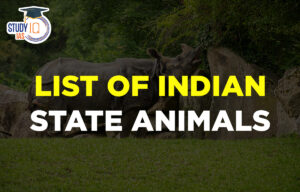Context: The Prime Minister said in his latest address to citizens that the spirit of democracy has been present in every part of our country since ages and cited a few examples of it.
Prevalence of Democratic Features and values throughout the history of India
Uthiramerur Inscriptions

- Uthiramerur is a panchayat town in Kancheepuram district in the state of Tamil Nadu.
- It is noted for its temple inscriptions that describe a self-governance system existing around 7th to 9th century CE.
- These inscriptions date back to the period of Parantaka Chola I (907–950), Rajaraja Chola I (985–1014), Rajendra Chola I (1012–1044) and Kulothunga Chola I (1070–1120), indicating various gifts to the temples.
- Rural self-governance:
- The inscriptions indicate that Uthiramerur had two village assemblies: Sabha and Ur.
- The Sabha an exclusively Brahmin (priestly class) assembly, while the Ur was made up of people belonging to all the classes.
- Chola Kudavolai Election System:
- As per the inscriptions, every village was categorized as kudumbu (ward in modern day parlance) where representatives of general assembly were elected.
- Qualification for contesting: Must own land, own a house built on legally-owned site, have knowledge of ‘Mantrabrahmana’, and above 35 years of age and below 70 years.
- Disqualification: If elected members proven guilty of misconduct, they were disqualified from contesting future elections.
- Committees: Village general assembly resolved to choose member for Annual Committee, Garden Committee, and Water bodies Committee.
Anubhava Mantapa of Lord Basaveshwara

- It was established by Lord Basaveshwara (Basavanna) to facilitate gathering for philosophy and experience.
- Earliest parliament: Anubhava Mantapa was one of the earliest Parliaments in the history of mankind.
- Prabhudeva, a great Yogi of extraordinary achievement, was the President and Lord Basava acted as the Prime Minister.
- Problems tackled were of various natures covering social, religious, spiritual, yogic psychological, economic, and literary spheres.
- Difference: Only difference between the present-day parliament and Anubhava Mantapa is that members were not elected by people, but were picked up or nominated by higher authorities of Mantapa.
- Lord Basaveshwara (1105-1167):
- He was a 12th century poet and reformer born in Karnataka.
- Known for Socio-Religious Reforms, Anubhava Mantapa, Vachana Literature and Lingayat Movement in south India.
- Basava Purana, written by Palkuriki Somanatha in 13th-century, holds full account to Basavanna’s life and ideas.
- He rejected gender and caste discrimination, superstitions and rituals. A strong promoter of ahimsa (non-violence), he condemned human and animal sacrifices.
Bhakti Movement

- The PM has also mentioned that the Bhakti movement furthered the culture of democracy in western India.
- The Bhakti movement was a significant religious movement in medieval Hinduism that sought to bring religious reforms to all strata of society by adopting the method of devotion to achieve salvation.
- It promoted the idea of equality of all people by rejecting the ideas of the caste system, and allowed women to join the movement.
The Sikh Panth

- Sikh Panth refers to the entire society, community, fellowship or religious body of Sikhs all around the world.
- The spiritual doctrine of the Sikh panth follows unique lifestyle practices, ideals, and governance structure from its conception.
- This Raj (governance, or rule) was established by Guru Nanak Sahib, as described by the composition of Bards Satta and Balvand (contemporaries of Guru Arjan Sahib, 1563-1606).
Kakatiya Tradition

- The Kakatiya dynasty was a Telugu dynasty that ruled most of eastern Deccan region in present-day India between 12th and 14th centuries.
- Their territory comprised much of the present day Telangana and Andhra Pradesh, and parts of eastern Karnataka and southern Odisha, with Orugallu (present day Warangal) as their capital.
- They constructed irrigation tanks that played a critical role in peasantry life. These tanks are still in use.
- There were elected committees in the villages to look after installation and maintenance of tanks, canals, and reservoirs.


 Daily Quiz 17 April 2025
Daily Quiz 17 April 2025
 Nilgiri Biosphere Reserve, Map, Climate,...
Nilgiri Biosphere Reserve, Map, Climate,...
 Complete List of Indian State Animals
Complete List of Indian State Animals





















